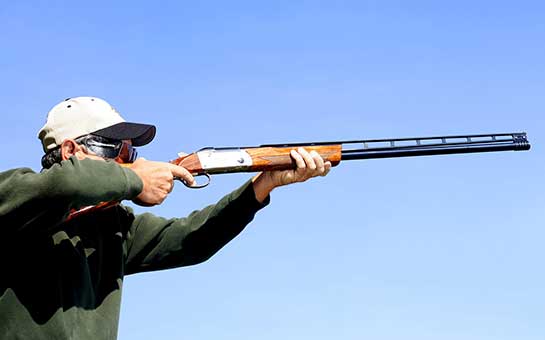Looking forward to some trap shooting during your impending vacation? Trap shooting, also known as clay pigeon shooting, is a great way to pass the time and improve your aim. Go ahead and enjoy, but don’t forget to buy your travel insurance for trap shooting before you start packing your bags.
Standard travel insurance plans will not cover any medical expenses related to hazardous sports activities like trap shooting. However, with a hazardous sports add-on, you’ll have the protection you need in case any unexpected injuries or accidents should occur. So, get that trapshooting travel insurance and relax.
Travel Insurance for Trap Shooting
No investment in safety is ever a waste. It makes absolute sense to buy extreme sports travel insurance; you won’t think you need it until you definitely wish you had it. You don’t want to burden your vacation with out-of-pocket expenses for an injury sustained during trapshooting practice.
With your trapshooting travel insurance, you won’t have to worry about medical costs landing you in trouble. If you plan to engage in the simple fun of clay pigeon shooting, travel insurance for trapshooting will help you concentrate on your targets.
Introduction to Trap Shooting
Trap shooting (sometimes spelled “trapshooting”) originated in England in the late 18th century. Hunters did target practice by shooting live pigeons released from some kind of trap, like a cage or a hat. Over time, it evolved into a sport with live pigeons being replaced by clay disks that closely resemble flying pigeons. Hence the name clay pigeon shooting. Today, it has become an adventure sport popular enough to be made into an Olympic event.
A trap field has one trap house and five shooting stations at a distance of 15 meters. Targets get thrown into the air from the trap house at different angles unknown to the shooter. Shooters usually use a double-barrel 12-gauge shotgun. Alternatively, you can use a specialized, target-type shotgun.
In a regulation round, 25 targets get released. Each shooter fires at five targets from each of the five stations. In a doubles round, two clay pigeons get released simultaneously, and the shooter has to fire at each one.
A variation of trapshooting known as down-the-line shooting, or DTL shooting, is especially popular in the Commonwealth countries.
Be aware that hazardous sports travel insurance doesn’t cover any claims related to injuries sustained during competition. In this context, these plans are largely intended for informal shooting with a group of friends or family.
Risks of Trap Shooting
Anyone 10 years of age and older can participate in trapshooting. Certain safety precautions are also mandatory—earmuffs or earplugs, for instance, as protection against sustained exposure to gunfire. Special eyeglasses are also compulsory as is a peaked hat or cap to protect your head from the falling debris of a hit target.
Don’t let that lull you into believing that you can ignore adventure sports travel insurance for trapshooting and other shotgun sports like skeet shooting or sporting clays. Accidents can always occur, no matter how careful you are or how many precautions you take. It’s best to be prepared.
If you use lead bullets, you’re at risk of lead exposure. High levels of exposure can cause abdominal cramps or pain, and other health problems.
You could also be struck by falling debris from a hit target. No one can control a sudden change in the wind direction, a gust of wind, or the angle at which the pieces will scatter. A sharp piece falling at high velocity could cause serious injury to exposed (or even unexposed) skin.
There are also the myriad risks associated with firearms. Your shotgun could misfire, or there could be an accident—genuine or as the result of poor or unsafe handling—on the range. Be sure to follow all the rules and procedures of firearm safety when trap shooting.

